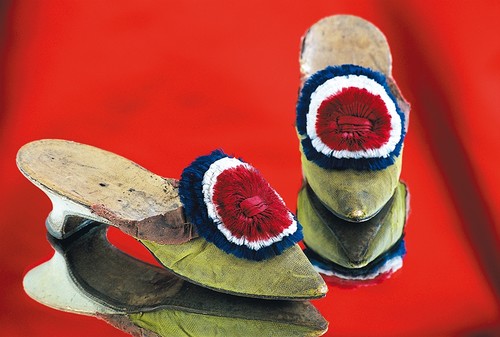History

The luxury leather and footwear industry has shaped the identity of Romans-sur-Isère and its region for more than a century, giving it important national and international stature during the pre-war years and, more significantly, during the golden years of the post-war boom.
However, the leather and footwear industry in Romans actually harks back to the much earlier Middle Ages, when an artisan and trade economy was driven by wool and silk crafting, along with tanning and tawing, that all thrived due to the ready supply of water. The Vercors and the plateaus of the Isère area provided the hides and the oak bark used in tanning.
In the 19th century, shoemaking appeared as a craft alongside these leather tanning activities, until 1850, when everything sped up as François Barthélémy Guillaume came up with the idea of using the leather produced by local tanneries, and creating the first hobnailed shoe factory. The advent of electricity led to further mechanisation, but the shoe industry in Romans only started to become the main industry during the First World War. Only then could you really call it a single-industry town. The inter-war years saw it turn into the ‘shoe capital’ and by the end of the Second World War, it boasted more than 200 footwear-related businesses. By the 60s, more than 5000 people worked in the footwear sector.
With the development of international trade and increased competition from low-wage countries, from the end of the 70s onwards, this industry literally collapsed within the space of three decades: repeated crises led to numerous closures of renowned businesses and mass redundancies in the sector.
From a cultural point of view, Romans-sur-Isère naturally bathes in its glorious leather- and footwear-related industrial past, preserving a reputation that is still very much alive in collective memory, and not only in France.
Economically-speaking, the leather and shoemaking industry has reincarnated itself. In the 90s, it started providing subcontracting services to the luxury leather goods sector and, more recently, footwear has once again come to the fore with new workshops providing short product runs. The aim is to develop a high-quality artisan production for niche markets with a strong emphasis on creativity and innovation.